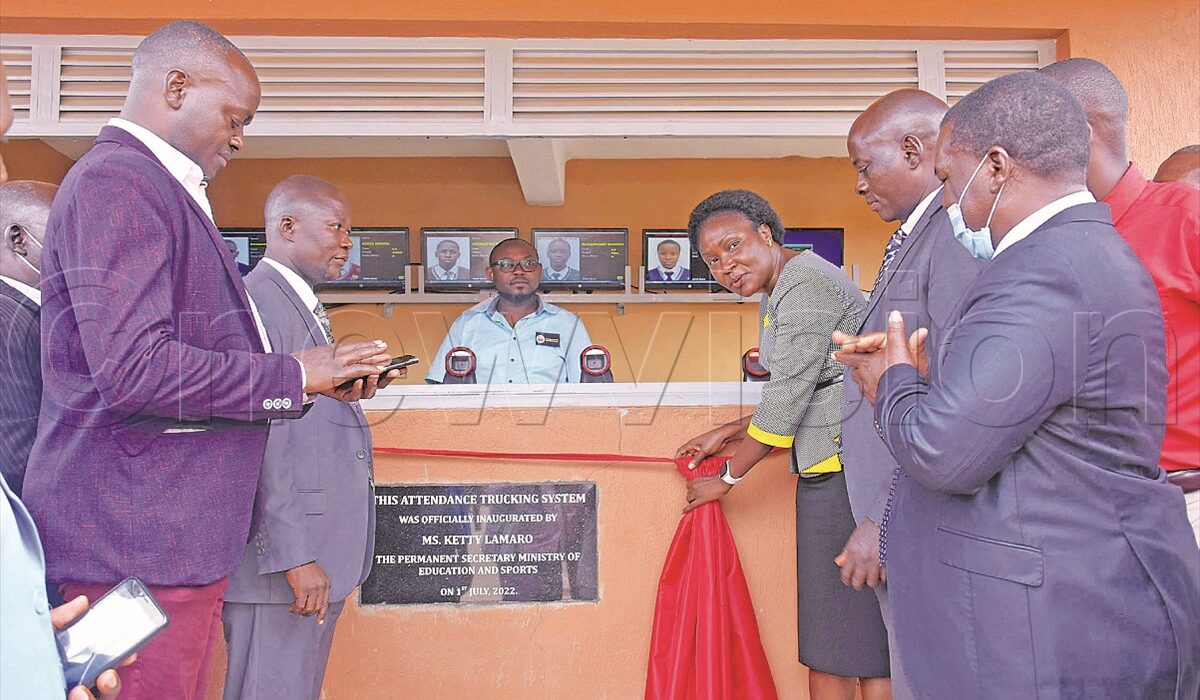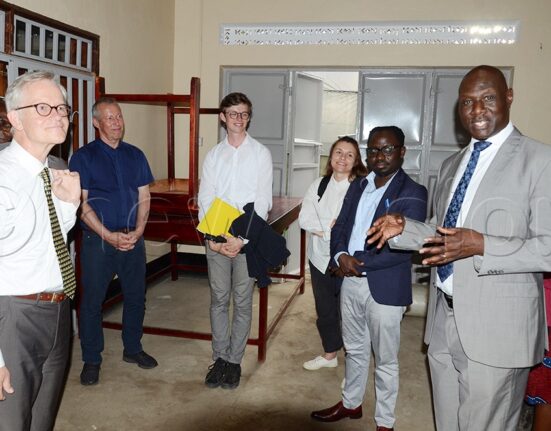(This article was first published in the New Vision on August 3, 2022)
By Ibrahim Ruhweza
In 2019, 14-year-old Jessica (not real name), dropped out of Kitebi Secondary School in Kampala on realisisng that she was pregnant. When that happened, little did the school know that it would lose many other girls to pregnancy soon after. By the end of the year, 50 girls had dropped out of this public secondary school, which has a population of over 3,000 students. An investigation by the school showed that some of the girls who dropped out due to pregnancies did not report to school for several days, yet on all occasions, they left home for school.
On realising how hard it was to monitor student attendance, the headteacher, Muhammed Kamulegeya, introduced an electronic learner tracking system at the beginning of this year’s first term.
The system, which allows teachers and parents to track a learner’s school attendance, was launched by the education and sports permanent secretary, Ketty Lamaro, at the school in Kampala recently. The school, which said the technology has “eliminated” student absenteeism, is hopeful that it will also help it reduce early pregnancies.
The system, which works as a roll call tool, registers the daily attendance of students and teachers. The students have been issued with cards, which they swipe at the electronic attendance device on arrival at school.
The machine then sends a report to the mobile phones of the parents and school managers, notifying them about the student’s arrival at the institution. It also sends alerts to parents and teachers as students sign out at the end of class.
“I commend the school administration for establishing the students’ electronic attendance tracking system, which gives feedback to the concerned parents, about the attendance of their children at school in real-time,” Lamaro said after launching the electronic school attendance system.
She described Kamulegeya as an innovative and hard-working headteacher, saying his style of management and solutions-based approach should be emulated by all teachers across the country. She noted that effective school management is key to improving the quality of education.
Lamaro says innovative solutions like this could be embraced by schools to deal with challenges, such as students skipping classes, which can land learners in problems like early pregnancies and marriages, which continue to shatter the career dreams of many girls.
Records in the education ministry show that about two million pupils join Primary One every year, but only around 600,000 of these make it to Primary Seven.

Kamulegeya says he set up the attendance tracking system to reduce cases of learners dropping out of school. He adds that his decision to put in place the system was informed by the fact that some students, especially the girls, left their homes for school, but did not get to the institution.
While the parents thought their children attended school, according to Kamulegeya, they were, instead meeting “boyfriends and sugar daddies.”
“Students now arrive at school early and we expect this to improve our academic performance,” Kamulegeya added.
He revealed that the school procured the system from Scotland at a tune of sh200m — which was part of the school fees paid by the parents. Kitebi is one of the government-aided schools where students pay fees.
“We tested the technology in the first term and when we were convinced it works, we decided to launch it,” Kamulegeya says.
“It is good because it allows parents and teachers to monitor students jointly,” he adds. A similar system exists in some schools in Kenya, where students sign in and out as they arrive and leave school daily using biometric devices.
The system, which some Kenyan schools introduced in 2018, sends alerts to teachers and parents as students clock in and out. It was intended to help parents and teachers to monitor the students’ whereabouts and promote their safety.

Parents Speak Out
Agnes Nalukenge, a student at Kitebi Secondary School, says the system has encouraged students to keep time. “If you arrive at the school late, you cannot register because all machines are locked by 8:30am and unlocked at 5:00pm when we leave the school. If one does not clock in, the parents get a message indicating that they have not reached school,” she added.
Brenda Namuleme, another student, says previously students who missed classes would get registered by their peers on sheets of paper provided by teachers as having attended, but this fraudulent practice has been eliminated by the system.
“Some of us would not attend classes for a week, but that is no longer possible because we are being tracked,” Shafik Kasaga, another student, says.
Grace Kisakye, a parent, says the innovation has inculcated a sense of responsibility among the students as they try to return home, as early as possible
UNESCO Report
A report released by the United Nations Educational, Scientific and Cultural Organisation (UNESCO) in 2017 showed that Uganda had the highest school dropout rate in East Africa, followed by Kenya and Tanzania.
According to the World Bank, more children from poor families have enrolled in schools in Uganda, where free primary education was introduced over a decade ago.
However, the country suffers from high school dropout rates blamed on financial challenges, including requiring parents to pay for lunch and construction fees for their children.
An analysis of the latest information shows that 31% reached Primary Seven in Uganda last year, which represents an improvement although the dropout rate is still high. This problem has been blamed by some studies on factors, such as early pregnancies and marriages, poverty, corporal punishment and lack of interest and lunch at school.
Other school dropout drivers include a lack of counselling and guidance, domestic labour and poor management of menstruation periods.
John Eresu, a researcher on educational issues, blames part of the school dropout problem on Uganda’s academic system, which he says restricts learners to the “rigours of education” alone.
“This means pupils who cannot cope with the pace of the tough academic work lose interest and leave school,” Eresu explains.
The high school dropout rate threatens to reverse gains registered in the education sector. However, innovative approaches, such as the school attendance tracking system could make a significant contribution to efforts to address some major drivers of the problem – teen pregnancies and marriages.









Leave feedback about this